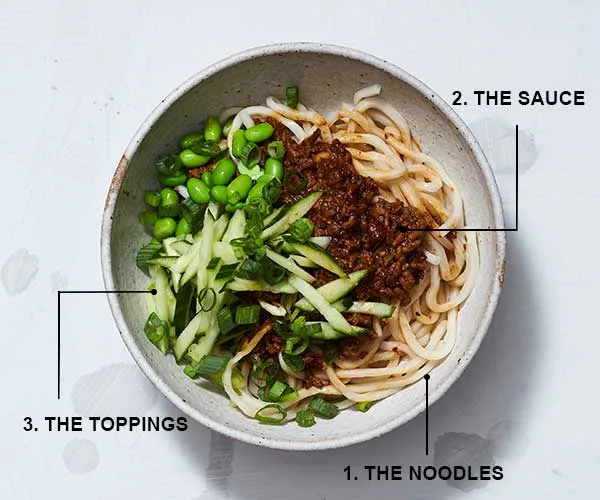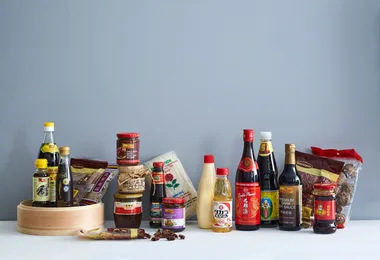A warm bowl of al dente noodles smothered in a rich sauce – what’s not to love? Chef and food writer Tony Tan refers to the dish, which has origins in Shandong province, as “Beijing noodles with Chinese Bolognese sauce,” but the literal translation is “fried sauce noodles”. Zhajiang, a soybean paste, is the typical base for said fried sauce – the most commonly seen uses sweet fermented yellow soy beans – and the end product is thick, rich and full of flavour. Variations abound, however; ketchup is common in the Hong Kong version, for example. Whatever your flavour, stir it all up and slurp away.

1. The noodles
Chinese wheat noodles are the word here. They should still have some chew to them and their rough texture should help pick up all that sauce.
2. The sauce
There’s not always meat, but when there is it’s fried in a brown or yellow bean sauce made from zhajiang, fermented soy beans, and wheat flour. A balance of salt and sweet comes from the likes of onion, garlic, ginger and sugar. Ground pork, or sometimes beef, brings the protein.
3. The toppings
Coriander and thinly sliced cucumber tend to top the dish, but take it up a notch with spring onions or green soy beans. Want some extra heat? Go in with a spoon of Lao Gan Ma chilli sauce (a must-have in your arsenal of Asian pantry staples).
Where to find one
Chinese Noodle Restaurant in Sydney’s Haymarket remains the city’s go-to for a bowl, while in Brisbane, Little Valley‘s take on “Chinese Bolognese” has firm noodles with a sauce of diced pork and tofu enriched with ‘nduja and XO, all topped with prawn floss.
 Rob Shaw
Rob Shaw

